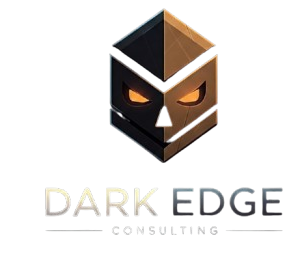Generative AI and Cybersecurity: Understanding the Risks and Ethical Challenges
Generative AI is changing many sectors, providing new abilities in automation and creativity. However, it also presents challenges, especially in cybersecurity. As AI advances, cybersecurity experts face potential risks and ethical issues. AI has a dual nature—it can be used for both attacks and defense. This raises questions about its role in security. This document explores generative AI in cybersecurity. It examines AI risks, deepfake technology implications, and ethical considerations. Our goal is to equip industry leaders with the insights needed to navigate this complex field responsibly.
Generative AI in Cybersecurity
Offensive AI Capabilities
Generative AI’s offensive capabilities pose a big challenge in cybersecurity. Attackers can use AI to automate and improve their tactics, making them more effective and harder to spot. AI can create advanced phishing emails, realistic social engineering scams, and malware that adapts in real-time to avoid security. It can also produce deepfake technology—fake but authentic-looking media—for spreading false information or identity theft.
These offensive AI strategies can increase the scale and impact of cyberattacks, making the job harder for cybersecurity professionals. As AI becomes more advanced, the risk of misuse grows. Understanding these AI risks is crucial for creating strong defense strategies and ensuring security measures keep up with the evolving threat landscape.
Defensive AI Strategies
The rise of AI-powered threats makes defensive AI strategies vital for cybersecurity. Defensive AI can strengthen digital infrastructures by automating threat detection and response. These systems analyze large amounts of data to identify anomalies that might indicate an attack, allowing quick intervention. Machine learning algorithms can predict threats based on historical data, enabling proactive action against emerging risks.
AI also improves intrusion detection systems, reducing false positives and ensuring real threats are not missed. By constantly adapting to new attack methods, defensive AI provides a dynamic shield against evolving cybersecurity challenges. Yet, implementing these defenses requires sound AI ethics, ensuring privacy is respected and new vulnerabilities are not introduced. Thus, a balanced approach is essential to use AI effectively in cybersecurity defense.
AI Risks and Ethical Challenges
Deepfake Technology Concerns
Deepfake technology is a major challenge in AI risks and ethics. These AI-generated media can seamlessly change audio and video content, making them look real. This poses a severe threat to information integrity, as deepfakes can spread misinformation, manipulate public opinion, or impersonate individuals for harmful purposes. The misuse potential in political, social, and economic areas raises serious ethical concerns.
Furthermore, deepfakes can erode trust in digital media, leading to skepticism about legitimate content. This lack of trust can have widespread effects, impacting personal relationships and international diplomacy alike. As generative AI progresses, developing technologies and policies to detect and reduce deepfakes’ impact is crucial. Ensuring transparency and accountability in creating and distributing AI content is vital to address these ethical challenges and maintain digital information integrity.
Navigating AI Ethics
Navigating AI ethics requires a careful balance between innovation and responsibility. As AI technologies develop, ethical considerations must guide their creation and use to prevent harm and ensure societal benefits. Key ethical issues include privacy, consent, accountability, and transparency. AI systems must respect user privacy and obtain consent for data use. Clear accountability mechanisms are needed to address errors and biases from AI applications.
Transparency in AI processes allows users to understand how decisions are made, ensuring systems don’t operate as “black boxes.” Ethical guidelines should also promote inclusivity, ensuring AI technologies don’t reinforce existing biases or inequalities. By integrating ethical considerations into AI systems’ design and implementation, stakeholders can harness AI’s potential while guarding against unintended consequences, fostering public trust and acceptance.
Preparing for the Future
Industry Best Practices
To prepare for the future, adopting industry best practices in AI and cybersecurity is essential. Organizations should focus on continuous learning and adaptation to stay ahead of emerging threats and technological advances. Implementing strong cybersecurity frameworks, such as zero-trust architectures, is critical for protecting systems against unauthorized access and data breaches. Regular audits and penetration testing can identify vulnerabilities before they are exploited.
Additionally, a culture of collaboration between AI researchers, developers, and cybersecurity professionals can improve security measures’ effectiveness. Sharing knowledge and insights across industries and sectors helps understand potential risks and solutions. Clear regulatory guidelines and ethical standards can provide a foundation for responsible AI use. By focusing on proactive risk management and ethical AI deployment, organizations can navigate AI challenges and ensure a secure digital future.
Collaborative Solutions
Collaborative solutions are crucial for addressing generative AI challenges in cybersecurity effectively. By fostering partnerships between academia, industry, and government, stakeholders can combine resources and expertise to create comprehensive AI risk management strategies. Collaborative efforts can lead to standardized protocols and frameworks that enhance security and ensure ethical AI deployment.
Joint research initiatives can drive innovation in creating advanced AI detection and mitigation tools. Cross-sector alliances can share threat intelligence and best practices. International cooperation is also essential for creating global norms and regulations that address cyber threats’ transnational nature. Engaging diverse perspectives, including AI ethicists and human rights advocates, ensures these solutions are both effective and socially responsible. Ultimately, by working together, stakeholders can build a resilient digital ecosystem that withstands the evolving challenges of the AI-driven world.



